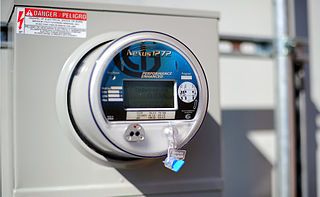GreenTechMedia’s “The Energy Gang” – Discussing the Future of the Electrical Utilities

The first segment of the show examines the constantly improving value proposition by which individual utility customers come to question their dependence on the grid, and contemplate going with solar photovoltaics and batteries. The presentation analyzes the whole arena, and projects times in the future, some near, some mid-term, at which grid parity will be reached, and large numbers of such customers, both consumers and commercial entities, will either disconnect from the grid entirely, or, even worse for the utilities, remain connected but essentially zero-out their electricity bills.
Though this was a fabulously interesting discussion, it presumes that a number of things won’t happen which I believe are actually quite likely:
One is a wholesale re-thinking of our utilities, what they provide, and how they’re compensated for doing so. They need to be encouraged to sell us less energy, via our forays into efficiency, and to integrate more renewable energy, achieving and surpassing the renewable portfolio standards (RPSs) that currently exist in 30 of the 50 states. As we’re starting to see, the American people have shown that they will insist on this; even in ultra-conservative Kansas about 80% of the voters want an RPS, and, despite the enormous amount of money spent by the fossil industry to attempt to make the current one disappear, the state legislature recently upheld it.
The bottom line is that we need the utilities for a whole bunch of reasons; we just need them in a fundamentally different way than we did when we created them 100 years ago. How likely is it that the years will roll by, the customers will defect, the utilities will flounder, and new regulations won’t be created to deal with the realities of the 21st Century? Not very.
The other thing that I bet will happen eventually is something that radically changes the cost of grid energy, which becomes possible as Americans finally realize that our scientists are telling us the truth about climate change. This could take a number of different forms, e.g., a carbon tax or increasing emissions requirements on coal-fired power plants. We could also see greater restrictions on fracking.
Another factor entirely is that the wholesale cost of renewable energy paid by the utilities comes down, and there are numerous financially related things already in the works that could bring this about. One, of course, is master limited partnerships (MLPs) for solar and wind, which are the preferred tools for capital formation in oil and gas, though currently illegal for solar and wind. When that changes, and I predict it will, the cost of capital for utility-scale renewables will be greatly reduced.
Along the same lines, I predict that the U.S. Congress will someday get its act together regarding tax incentives – the ITC (investment tax credit) and/or the PTC (production tax credit). These don’t have to be permanent, but they do have to be predictable. Making them permanent, even in the face of costs that are bound to fall over time, would create windfall profits (pardon the pun) for developers, and would unfairly destroy the market for competitive clean energy technologies (hydro, biomass, and geothermal). Again, however, they have to be predictable, perhaps offering a dependable formula by which they remain in place for a certain period of time, then taper off to zero over a prescribed number of years.
As most presentations one sees on subjects like these, it’s based on the notion that the future will look like the past. The problem is that the future always looks like the past – until it looks like something completely different.
